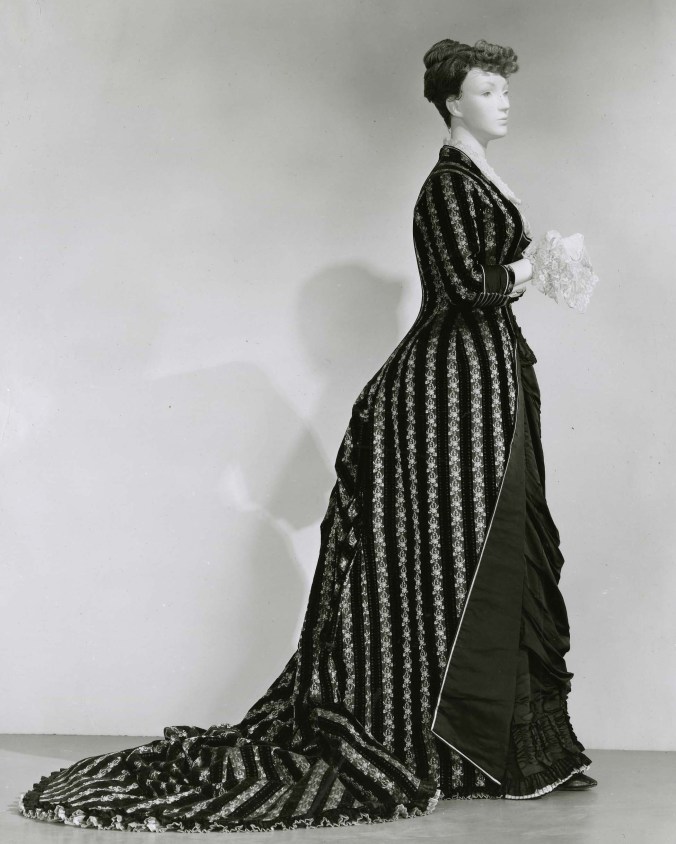If you liked our previous post in asymmetrical style, here’s another example from the same couturière, Maison Cécile Laisne:
This time, the designer utilized a combination of an ivory-colored silk jacquard overskirt arranged in a spiral drape that works its way upwards towards the bodice combined with a silk underskirt covered in an elaborate network of woven cords and what appear to be large metallic beads. If one looks carefully underneath the net, one can see an underskirt consisting of rows of knife pleating, also in an ivory color.
The bodice is long, going over the hips and is typical of Mid-Bustle/Natural Form styles. The bodice is symmetrical, consisting of what appears to be some sort of plain ivory-colored silk satin fabric framed along the hem and front by wide rows of ivory silk satin with passementerie consisting of cording and metallic beads similar to that of the net underskirt. Below is a close-up of the fashion fabric found on the overskirt:
From the pictures, it appears that the net underskirt is visible on the left side only while covered with the outerskirt draping on the right.
The cord work netting is amazing and the steel beads really give it definition. It also appears that there’s some ruching of the fabric of the underskirt foundation. The dress’s asymmetrical style can really be seen from this rear view picture:
The demi-train is pleated and has two or three rows of knife pleating running along the hem. Further up, one can see where the spiraling outerskirt ends, secured in the folds of the train (can we say draping? 😁 ). A small bow on the bodice back at hem level completes the look. And last, here’s the dress label:
Compared to Maison Cécile Laisne’s design in the first post, we tend to like this design a lot better because the asymmetrical elements are arranged more harmoniously with the dress achieving a unified style rather than having elements seemingly “bolted on.” But as with all of this, it’s a very subjective thing. 😁











































